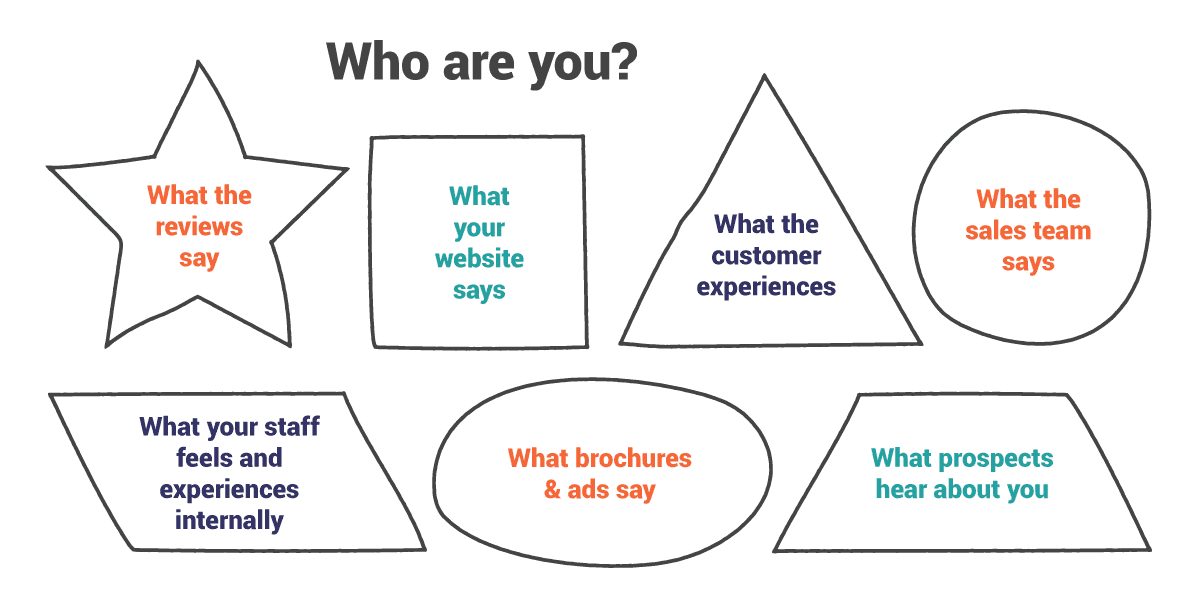
What Is a Communication Strategy & Do I Need One?
One of the most unmet requirements of professional services marketing is clarity.
The industry is full of websites that say nothing, and firms that blend into the sea of sameness. Often this is due to not having a communication strategy.
Everywhere you turn there is another jargon-filled mission statement that leaves you no more informed than before you read it. It's no wonder so many firms feel like a commodity. That is how they are presenting themselves… just like everyone else.
- To be noticed, it needs to be clear what you do.
- To be invited to the table, it needs to be clear who you were built to serve.
- To be hired, it needs to be clear that the value you create outweighs the cost of the service.
- To be referable, what you do for whom needs to be easy to remember, say and be understood.
“If you're getting haggled on price and are being treated like a Motel 6, then be honest with yourself. You are presenting yourself as Motel 6” – Grant Cardone
One of our tasks as marketers is to get over the bridge of awareness and into the minds of prospects in a way that is meaningful to them so they choose us. Getting awareness takes time, money, effort, and a strategy. If your firm is undifferentiated from the competition, it will take significantly more money, time and effort to get their attention… if you ever do.
Be the knife that cuts through the clutter.
I get that this is easy to say and hard to do. Especially if you are not in charge of the corporate communication strategy. It's even harder if you are a satellite office and the HQ messaging doesn't really connect with the vibe in your town.
The bigger the firm, the more offices you have, and the more verticals you occupy compound the problem of answering “why should I hire you?”
Sending misaligned messages completely confuses not only your customers but the market in general. Both current and potential customers won’t know how to interact with your company or what to expect when working with you.
There’s nothing worse than being told one thing by a member of staff, then told something different by another and then the website contradicts everyone.
It irritates and frustrates your team and your customers alike – everyone on your team needs to be singing from the same songbook or the whole company sounds like a mess.

So, how can you avoid communication efforts going wrong?
The solution to your problems is a well-planned-out, fully-researched and thorough communication strategy.
What is a communication strategy?
A communication strategy is designed to help you and your organization communicate effectively and meet core company objectives. It includes internal communication and interactions with your customers and the general public.
What does communication strategy include?
A good communication strategy has five major components:
- List of desired outcomes (goals)
- Core messaging (verbal brand – what words to we use to convey who you are, what you do and why)
- Communication plan (how and when)
- Defined target audience (who are we talking to)
- Carefully-selected communication channels (social, email, mail, ads, print…)
Communication is complex. It’s even more complex when you take into consideration the many complex offerings your company may have to offer.
Your communication strategy should simplify a very complex, multi-faceted situation. It’s there to make your life easier.
What are you trying to achieve?
The first step in any communication strategy is figuring out what the goals are. Are you wanting to change your position in the market or establish one? Are you pivoting and wanting to be known for something else, or achieve being known as an authority? Are you wanting to differentiate from the competition to avoid being a commodity? So many companies fall down at the first hurdle by underestimating the time, work and research that goes into this phase. You can't create a plan if you don't know where you are going. If you skip this step and move onto tactics, get ready to say good-bye to a lot of your hard-earned marketing dollars.
Strategy without tactics is the slowest route to victory. Tactics without strategy is the noise before defeat.
—Sun Tzu
Who do you serve and what do you do for them?
Defining who you are and what you do is a vital stepping stone in creating a strong company brand identity. I often refer to this as your “WHO and DO WHAT statement”.
If you don’t know who you are and how to talk about what you do clearly, how will your prospect be able to understand?
Everybody thinks they know who they are until they really examine the language they are using and see how generic it is. Saying, “I'm a general contractor” is telling people your broad category, and GC is super broad. Do you build commercial or residential? Do you build small or skyscrapers? A better choice would be, “My general contracting firm specializes in 1-4 story commercial buildings (for x niche) in Central Texas. This statement is missing the “for whom” but even without a specific niche, I know a lot. I can file them in my memory and when I run into someone who is building a 1-4 story commercial building, I can refer them. Adding “multi-family communities” or another specific niche would be amazing.
Most companies are so busy fulfilling customer needs that they haven’t taken the time to pause and step back a bit and look at their communication from the prospects’ point of view.
Next, you want a WHY statement. Why do you do what you do?
They why within your brand values should be on show in everything you do and often shows up in your brand story but can be used along with your who and do what statement.
I know this sounds like woo woo crap, but it matters.
Your why will be pretty unique to you. Your motivation behind what you do will also help to draw in an audience that feels the same way. When a customer feels an affinity with you why they’ll stay loyal and choose you over a company that lacks a defined motivation.
You’re the best at what you do and there’s only one company like you.
Different is better than better. Better is fragile and can be replicated. Creating a communication strategy forces you to define your difference.
This should come through in everything you write, everything your staff does and everything your customers sees and feels when interacting with you.
By defining who you are and what you do, you’re defining your niche in the industry, your position of strength – and standing out from all your competitors at the same time.
Brand differentiation is essential in our industry – if you’re one of many, you’re easily replaced by the next cheapest contractor.
If you are one of many you will be chosen on price and no one wants to play the commodity game.
Once you’ve figured out who you are, what you do, who your audience is and what you want to say, you need to figure out where you’re going to say it.
Communication channels for prospects
There are a lot of communication channels to choose from and what’s right for your company depends entirely on your company’s unique attributes and your target audience.
To give you an idea of what communication channels you can use, here’s a list of some of the most commonly used:
- In-person meetings
- One-on-one conversations
- Networking and public events
- Blogs, newspapers, and magazines
- Email marketing and newsletters
- Posters, billboards, and signs
- Radio and podcasts
- Online video advertising
- Funnels and landing pages
- Your own digital headquarters (your website)
- Press Releases and earned media
- Social media
Within each of these super broad categories, you have multiple options to choose from too! Take social media – will you use LinkedIn, Facebook, Twitter, Pinterest, Instagram? Will you use social media marketing or stick to organic posts?
Creating a communication strategy can feel overwhelming. We’re not going to lie – it takes a lot of self-reflection and effort to figure out the answers to all the questions needed to connect and communicate with your prospects. But boy is it worth it.
We help companies just like yours connect with their prospects every day of the week. It’s what we do. Our goal is to build solid brand foundations for all of our clients. Your brand foundation includes working through and developing a communication strategy. Get those communication problems off your plate completely – connect with us now.
Here are a few other articles you might like:
Tracy O’Shaughnessy Founder / Lead Brand Strategist of Branding & Beyond
Tracy and her team help firms in and around the B2B building trades look and sound credible online and off.
She has been in the industry since the early '90s and is tired of seeing fantastic firms struggle, blend in, and get bypassed by prospects who judge them solely on the outdated information found online.
Branding & Beyond's mission is to solve real business problems and build the brand foundation clients need to get noticed and hired.
You can find Tracy on Linkedin and here on this blog.
